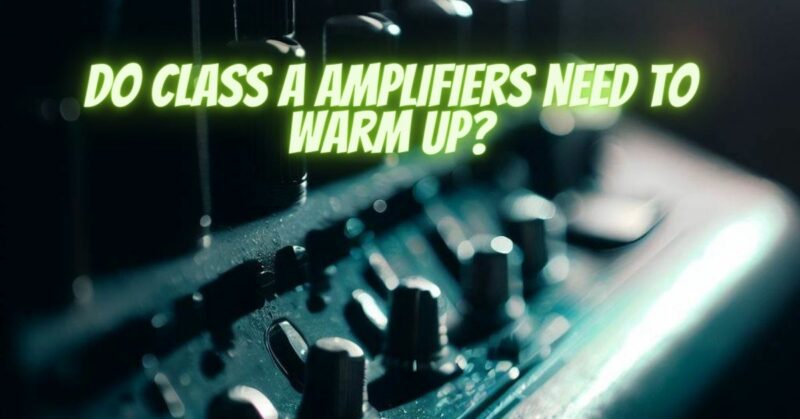Class A amplifiers are renowned for their high-quality sound reproduction and are coveted by many audiophiles for their ability to deliver pristine audio. However, a persistent belief in the audio community is that Class A amplifiers need time to warm up before reaching their optimal performance. In this article, we will explore Class A amplifiers, examine the origins of the warm-up myth, and determine whether it holds any truth in the context of modern audio equipment.
Understanding Class A Amplifiers
Class A amplifiers are a specific type of electronic amplifier known for their design and operation. Unlike Class AB or Class D amplifiers, which alternate between different transistors to handle the audio signal, Class A amplifiers operate in a way where the output transistors are conducting the entire time, regardless of the audio signal level. This continuous conduction results in certain characteristics associated with Class A amplifiers, such as low distortion and high linearity.
The Warm-Up Myth
The belief that Class A amplifiers require a warm-up period stems from the history of vacuum tube technology. In the early days of audio, both tube amplifiers and transistors experienced changes in performance as they reached their operating temperature. Tubes, in particular, needed time to stabilize and deliver their best performance.
However, modern Class A amplifiers predominantly use transistors and solid-state components, and the warm-up requirements of tubes do not apply. Yet, the myth persists due to historical practices and the desire to preserve the notion of a deliberate ritual for optimal audio performance.
Debunking the Warm-Up Myth for Class A Amplifiers
The idea that modern Class A amplifiers need to warm up is largely a misconception. Several factors contribute to this debunking:
- Solid-State Components: Class A amplifiers that utilize solid-state components, such as transistors, are designed for instant operation. Unlike vacuum tubes, solid-state components do not undergo significant changes in performance as they reach their operating temperature.
- Stable Operation: Solid-state Class A amplifiers operate consistently and predictably from the moment they are powered on. There is no need to wait for components to reach a specific temperature for optimal performance.
- Energy Efficiency: Modern Class A amplifiers are designed to be energy-efficient and do not require extended warm-up times that can result in unnecessary power consumption.
- Steady Sound Quality: Class A amplifiers offer stable and consistent sound quality throughout your listening session, without the need for a warm-up period.
- Psychological Factors: Audio perception can be influenced by psychological factors. Some audiophiles may believe that their Class A amplifiers sound better after a warm-up period because they expect them to. This placebo effect can play a significant role in audio perception.
In conclusion, the belief that Class A amplifiers need to warm up is largely a myth in the context of modern audio equipment. Unlike vacuum tube amplifiers of the past, Class A amplifiers that utilize solid-state components are designed for instant and stable operation from the moment they are powered on. While some audiophiles may still choose to indulge in the ritual of warming up their amplifiers, it is not a requirement for optimal sound quality. Enjoying music should remain the primary focus, and modern technology allows us to experience high-quality audio without the need for extended warm-up times.


